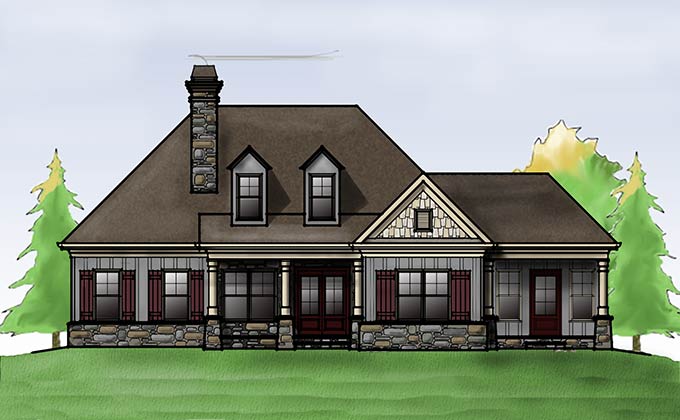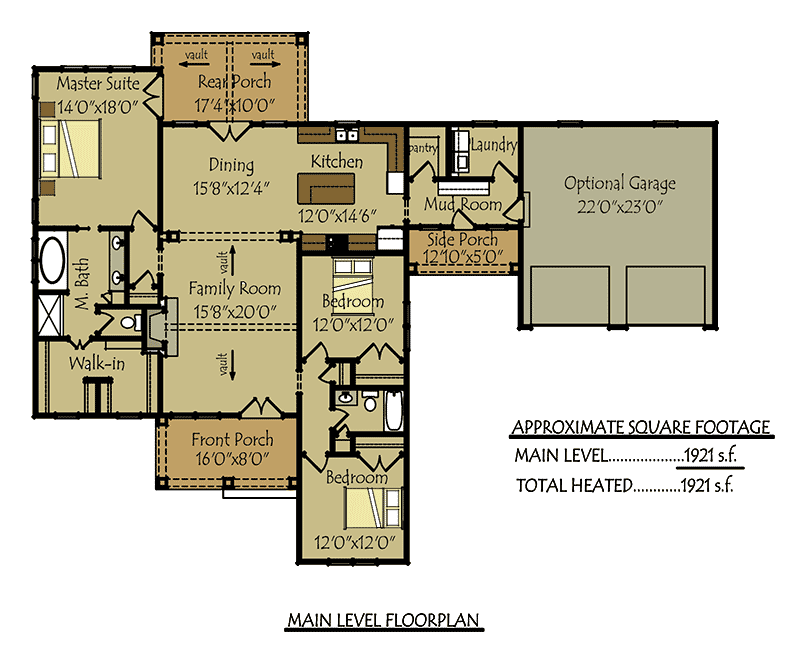

Residential House Plans
Main Floor:
1,921 sq. ft.Upper Floor:
noneLower Floor:
noneHeated Area:
1,921 Sq. Ft.Width:
56'Depth:
60'8"Bedrooms:
3Bathrooms:
2Stories:
1Additional Rooms:
Mud RoomGarage:
2 CarOutdoor Spaces:
Vaulted Rear Porch, Front Porch, Side PorchOther:
Optional Garage, Vaulted Family Room, Open FloorplanRoof:
11'2Exterior Framing:
2x4 or 2x6Ceiling Height:
9'Home Style:
Cottage, Rustic, BungalowLot Style:
Flat Lot, Narrow LotCottage Hill is a cottage style house plan with porches and an optional two car garage. A perfect blend of rustic materials on the exterior makes for a stunning elevation. However, the floorplan is what is spectacular, the family room is vaulted with a fireplace and has views that extend to the vaulted rear porch. The master suite is located at the rear of the house and has access to the vaulted rear porch, master bath and its own walk-in closet. Split bedrooms sharing a bath are located to the right of the family room. A mudroom, pantry, laundry and side porch connect the kitchen to an optional garage that comes with the plan.

Each set of plans includes:







Notes:
All sales on house plans and customization/modifications are final. No refunds or exchanges can be given once your order has started the fulfillment process. All house plans from maxhouseplans are designed to conform to the local codes when and where the original house was constructed. In addition to the house plans you order, you may also need a site plan that shows where the house is going to be located on the property. You might also need beams sized to accommodate roof loads specific to your region. Your home builder can usually help you with this. Many areas now have area-specific energy codes that also have to be followed. This normally involves filling out a simple form providing documentation that your house plans are in compliance. In some regions, there is a second step you will need to take to insure your house plans are in compliance with local codes. Some areas of North America have very strict engineering requirements. New York, New Jersey, Nevada, and parts of Illinois require review by a local professional as well as some other areas. If you are building in these areas, it is most likely you will need to hire a state licensed structural engineer to analyze the design and provide additional drawings and calculations required by your building department. If you aren’t sure, building departments typically have a handout they will give you listing all of the items they require to submit for and obtain a building permit. Additionally, stock plans do not have a professional stamp attached. If your building department requires one, they will only accept a stamp from a professional licensed in the state where you plan to build. In this case, you will need to take your house plans to a local engineer or architect for review and stamping.